Meat
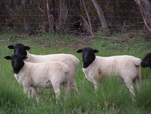
A higher yielding carcase than conventional prime lamb breeds, the meat is tasty and tender and highly desirable for the restaurant trade as the higher yield is made up of the more valuable cuts.
Shedding
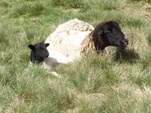
The obvious difference between the Dorper and other sheep is that they shed their wool, thus there is no need to shear, mules or crutch (resulting in lower maintenance). The wool falls off the sheep in the paddock and naturally biodegrades the only place it is usually seen is on the gates or places they have rubbed. The amount each sheep sheds its wool is dependent on genetics, climate and nutrition.
Adaptability
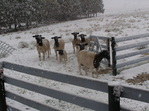
Dorpers are non-selective grazers and will eat most weeds and grasses, preferring variety in feed. They are useful in the control of fireweed. Dorpers have shown to thrive in both the deserts of Namibia, and the cold of Switzerland. They have adapted very well to Australian conditions, so well in fact they could have been bred for this country.
Fertility
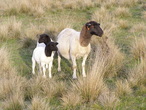
Dorpers have a large percentage of twins, and will readily lamb three times in two years. They are excellent mothers with a good milk supply. This extra lambing and higher lamb survival rates makes dorpers very competitive with wool sheep as a profitable farm enterprise. At the moment with good prices for lamb they return more $$$ per acre then cattle.
Survivability
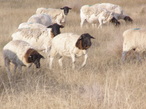
The new Dorper lamb has a very strong instinct to follow its mother, (I suspect from its Persian ancestry) and soon after birth will be mobile). Even with a merino mother lambing percentages improve when sired by a Dorper ram.